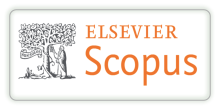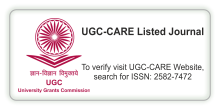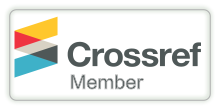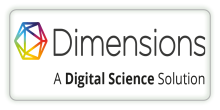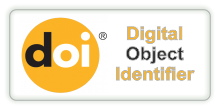E-GOVERNANCE'S ROLE IN GENDER EQUALITY AND SUSTAINABLE DEVELOPMENT
ई-गवर्नेंस की लैंगिक समानता और सतत विकास में भूमिका
DOI:
https://doi.org/10.29121/shodhkosh.v6.i2.2025.6532Keywords:
ई-गवर्नेंस, ई-लर्निंग, डिजिटल, समानता, सतत विकासAbstract [English]
E-governance is the integrated use of communication and information technology to deliver government information and services to a country's citizens. E-learning initiatives within e-governance, such as Google Meet, Zoom, YouTube, e-Pathshala, e-Library, e-PG Pathshala, etc., have greatly benefited women in the field of education. Through various digital platforms, women are pursuing their studies and achieving success in various fields. Various digital government schemes have had a positive impact on women. The government's e-governance schemes have made most tasks paperless. The goal of e-governance is to empower citizens through access and use of information. People, processes, technology, and resources are the key pillars of e-governance. The e-governance scheme aims to provide citizens with access to all government services through Common Service Centers. For centuries, women have been denied the right to equal participation in the nation's social and economic activities. The concept of gender equality has become a common concern, especially in India. Due to the patriarchal nature of society, women are unable to receive the respectful benefits of various government initiatives, even though India promises digital inclusion and digital opportunities. Rural India still suffers from the digital divide. Unleashing the full potential of e-governance initiatives without access to ICT is impossible. Gender differences impact connectivity and access opportunities. E-governance is not a panacea, yet it offers men and women an opportunity to overcome the social evils of gender inequality. The United Nations is holding a virtual meeting to promote sustainable development. The Declaration of the United Nations Conference on Environment and Development recognizes the right of every country to pursue social and economic progress and places on states the responsibility to adopt models of sustainable development.
Abstract [Hindi]
ई-गवर्नेंस किसी देश के नागरिकों को सरकारी सूचनाओं एवं सेवाएं प्रदान करने के लिए संचार एवं सूचना प्रौद्योगिकी का समन्वित प्रयोग करना है। ई गवर्नेंस में ई-लर्निंग पहलों जैसे गूगल मीट, जूम, युटुब, ई-पाठशाला, ई-लाइब्रेरी, ई-पीजी पाठशाला आदि से शिक्षा के क्षेत्र में महिलाओं को बहुत अधिक लाभ पहुंचा है। विभिन्न डिजिटल प्लेटफॉर्म के माध्यम से महिलाएं अपनी पढ़ाई कर रही हैं और विभिन्न क्षेत्रों में सफलताएं प्राप्त कर रही हैं। सरकार की विभिन्न डिजिटल योजनाओं का महिलाओं पर सकारात्मक प्रभाव देखने को मिला है। सरकार की ई-गवर्नेंस योजनाओं से अधिकतर कार्य पेपर लेस हो गया है। ई-गवर्नेंस का लक्ष्य सूचना की पहुंच एवं उपयोग के माध्यम से नागरिकों का सशक्तिकरण करना है। लोग, प्रक्रिया, प्रौद्योगिकी और संसाधन ई-गवर्नेंस के प्रमुख स्तंभ हैं। ई-गवर्नेंस योजना का लक्ष्य कॉमन सर्विस सेंटरो के जरिए आम नागरिकों को सभी सरकारी सेवाओं तक पहुंच प्रदान करना करना है। सदियों से महिलाओं को राष्ट्र की सामाजिक और आर्थिक गतिविधियों में समान भागीदारी के अधिकार से वंचित रखा गया है। लैंगिक समानता की अवधारणा विशेष रूप से भारत में एक आम चिंता का विषय बन गई है। समाज की पितृ सत्तात्मक चरित्र के कारण महिलाएं विभिन्न सरकारी पहलों से सम्मान लाभ प्राप्त करने में सक्षम नहीं है भले ही भारत डिजिटल समावेशन और डिजिटल अवसरों का वादा करता है। ग्रामीण भारत अभी भी डिजिटल विभाजन की चपेट में है। आईसीटी तक पहुंच के बिना ई-गवर्नेंस पहल की पूरी क्षमता सामने लाना असंभव है। लिंग भेद कनेक्टिविटी और पहुंच के अवसरों को प्रभावित करते हैं। ई-गवर्नेंस कोई अमृत नहीं है फिर भी यह पुरुषों और महिलाओं को लैंगिक असमानता की सामाजिक बुराइयों से उबरने का मौका प्रदान करता है। संयुक्त राष्ट्र सतत विकास को बढ़ावा देने के लिए वर्चुअल बैठक कर रहा है। संयुक्त राष्ट्र सम्मेलन पर्यावरण एवं विकास पर घोषणा प्रत्येक देश के सामाजिक और आर्थिक प्रगति को आगे बढ़ाने की अधिकार की मान्यता देती है और राज्यों को सतत विकास का मॉडल को अपनाने की जिम्मेदारी सौंप जाती है।
References
Bhanot, M., & Rajendran, C. P. (2023). Himalayan Blunders that are Ravaging the Himalayas. The Hindu. https://www.thehindu.com/opinion/lead/himalayan-blunders-that-are-ravaging-the-himalayas/article67242063.ece
CMAI. (2011). Digital India DeITY Details. http://www.cmai.asia/digitalindia/pdf/Digital-India-DeITY-Details.pdf
Chakravarti, S. (1987). Vikas Yojana: Bharatiya Anubhav [Development planning: The Indian experience]. Oxford University Press.
Digital India. (2017). http://www.digitalindia.gov.in
Down to Earth. (n.d.). https://www.downtoearth.org.in
Ericsson. (2015). ICT and SDG Interim Report. https://www.ericsson.com/res/docs/2015/ict-and-sdg-interim-report.pdf
Graham, J., Amos, B., & Plumptre, T. (2003). Principles for Good Governance in the 21st century. https://unpan1.un.org/intradoc/groups/public/documents/UNPAN/UNPAN011842.pdf
Gupta, M. P. (2004). E-Governance ka wada: Parichalan chunautiyan [The Promise of E-Governance: Operational Challenges]. Tata McGraw-Hill Publishing Company Limited.
Hindustan Times. (2022). Politics and People: Don’t Destroy the Himalayas for tourism gains. https://www.drishtiias.com/pdf/1660706572.pdf
India Today. (2016, December 2). Task force on Sustainable Development Goal 3 formed. http://indiatoday.intoday.in/story/task-force-on-sustainable-development-goal-3-formed-govt/1/825398.html
Kumar, R., & Best, M. (2006). Impact and Sustainability of E-Government Services in Developing Countries: Lessons from Tamil Nadu, India. Information Society, 22, 1–12.
Misra, U. (2015). How India Ranks on Gender Parity — and why? Indian Express.
NITI Aayog. (2016). NITI Aayog’s Role. http://niti.gov.in/content/niti-aayogs-role
NITI Aayog. (2017). Voluntary National Review Report. http://niti.gov.in/content/voluntary-national-19
Nair, S. (2015). More Gender Inequality in India than Pakistan and Bangladesh: UN. Indian Express.
National e-Governance Division. (2015). E-Governance Policy Initiatives under Digital India. http://negd.gov.in/writereaddata/files/Digital%20Repository/Policy%20Document.pdf
Pandey, A. S. (2004). E-Governance par ek Ubharti Jatil Pranali ka Pariprekshya [Perspective on an Emerging Complex System of E-Governance]. In M. P. Gupta (Ed.), Towards e-Government: Management challenges (237–246). Tata McGraw-Hill.
Suri, P. K., & Sushil. (2012). Planning and Implementation of E-Governance: A SAP-LAP based Inter-Analysis. Electronic Government: An International Journal, 9(2), 178–199.
Toja, A., & Toja, S. (2016). Role of ICT in Achieving UN Sustainable Development Goals (SDGs). In ICT for Promoting Human Development and Protecting the Environment (3–13).
UN Women. (2015–2016). Progress of the world’s women 2015–2016, Chapter 2, 69.
UN Women. (2018). Turning promises into Action: Gender Equality in the 2030 Agenda for Sustainable Development. https://www.unwomen.org/en/digital-library/publications/2018/2/gender-equality-in-the-2030-agenda-for-sustainable-development-2018
United Nations. (2016). UN E-Government Survey. http://workspace.unpan.org/sites/Internet/Documents/UNPAN96407.pdf
United Nations. (2017). Sustainable Development Goals. http://www.un.org/sustainabledevelopment/sustainable-development-goals/
WSIS. (2017). World Summit on the Information Society. https://en.wikipedia.org/wiki/World_Summit_on_the_Information_Society
World Commission on Environment and Development. (1987). Our Common Future (26). http://www.un-documents.net/our-common-future.pdf
Downloads
Published
How to Cite
Issue
Section
License
Copyright (c) 2025 Alka Sharma, Sanjay

This work is licensed under a Creative Commons Attribution 4.0 International License.
With the licence CC-BY, authors retain the copyright, allowing anyone to download, reuse, re-print, modify, distribute, and/or copy their contribution. The work must be properly attributed to its author.
It is not necessary to ask for further permission from the author or journal board.
This journal provides immediate open access to its content on the principle that making research freely available to the public supports a greater global exchange of knowledge.





